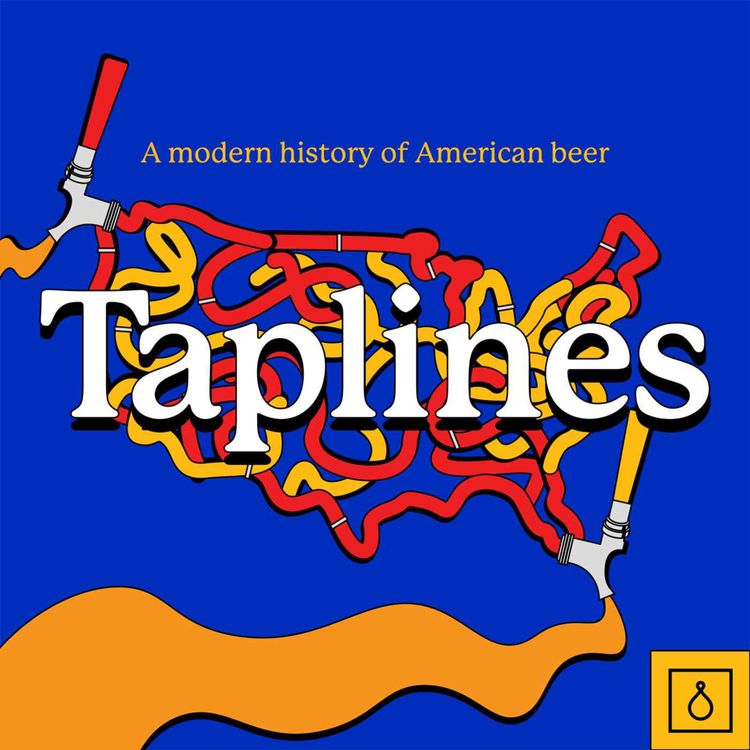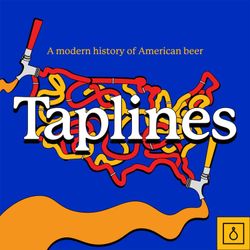Share

Taplines
At Dogfish Head, the Imperial IPA Is Born
Season 1, Ep. 16
•
Imagine a world before IPAs. Can’t do it, can you, Taplines listener? But it’s true: around the turn of this century, the American craft brewing landscape was awash in ambers, brown ales, lagers, and precious few versions of the hop-forward India pale ales that would come to dominate the category a decade later. The ones you could get ahold of in 1999 were mostly well-balanced West Coast-style IPAs. A continuously hopped imperial IPA from an East Coast brewery was quite literally unheard of. Which is where today's guest — Dogfish Head Craft Brewery founder Sam Calagione — and his genre-definining 90 Minute Imperial IPA come in. Don't forget to like, review, and subscribe!
More episodes
View all episodes

61. The Future of America's Beer Industry
01:07:51||Season 1, Ep. 61After 60 episodes of award-winning modern beer history, this is the final episode of Taplines. To send off the show, we're turning the Taplines Time Machine forward instead of backwards to speculate on how the American beer industry's past might inform its future with the inimitable historian and author of 'Ambitious Brew' Maureen Ogle. Maureen was our first guest, so it only makes sense that she'd be our last guest, too. Tune in one more time to hear her and Dave ponder what the U.S. beer business might look like 25 years from now. Don't forget to like, review, and subscribe!
60. Bud Light's GamerGate Gauntlet, Explained
01:07:46||Season 1, Ep. 60Journalist Charlie Warzel joins the show today for a wide-ranging, cross-discipline episode to discuss how the GamerGate style of extremely online grievance politics has become the dominant format for conservative backlash today, why it works so well, and why companies like Anheuser-Busch InBev — with all the resources in the world and a decade to learn how to brace against bad-faith attacks — keep falling for it. Don't forget to like, review, and subscribe!
59. How Four Corners Crafted a Big Beer Buyback
01:05:40||Season 1, Ep. 59George Esquivel is the co-founder of Four Corners Brewing Company in Dallas, Texas. He joins Taplines today to talk about selling his brewery to Constellation, spending five years within the belly of Big Beer's Big Golden Beast, then retaking control to go independent again in 2023. It's a rare perspective that only a few brewers across the country have, and Esquivel graces us with rare candor when telling his tale. Don't forget to like, review, and subscribe!
58. How Anheuser-Busch InBev Built Its Biggest Brand of the 21st Century
54:46||Season 1, Ep. 58Kimberly Clements, co-founder and managing partner of Pints LLC, joins Taplines today to talk about Anheuser-Busch's introduction of a little beer called Michelob Ultra, which August Busch III personally tapped her family's Arizona distributorship to help test out in 2002 in advance of a national release. Don't forget to like, review, and subscribe!
57. Meet the Middle Tier's Master Matchmaker
59:22||Season 1, Ep. 57Joe Thompson, the founder and president of Independent Beverage Group, is a five-decade drinks business veteran, and one of the most prolific brokers of middle-tier mergers and acquisitions in the United States. He joins Taplines today to talk about how Coors’ “silver” network and Miller’s “blue” network became Molson Coors’ “blue/silver” network — an esoteric saga he knows well, given he was involved in many of those transformative deals in the '80s and '90s. Don't forget to like, review, and subscribe!
56. The Oral History of the "F*CK AB-INBEV" Shirt
01:00:30||Season 1, Ep. 56Steve Luke, founder and head brewer of Seattle’s Cloudburst Brewing, joins Taplines today for a freewheeling conversation about an iconic moment — arguably, the iconic moment — of the 2018 Great American Beer Festival, which he single-handedly engineered both literally and figuratively with the help of a DIY t-shirt that read “F*CK AB-INBEV” across the front. There’s a backstory there, more so than the standard David vs. Goliath dynamic that was popular to describe the relationship between craft brewers and macro brewers last decade. Tune in for the full scoop, as told by the man himself. Don't forget to like, review, and subscribe!
55. The Cross-Category Battle for the Future of Hard Tea
49:31||Season 1, Ep. 55This week on Taplines, we're going cross-category with our pond-crossing pal from Cocktail College: VinePair's managing editor, Tim McKirdy. Tune in for a genre-breaking conversation about how the hard seltzer boom gave way to a bust that cleared the board for Twisted Tea’s decades-in-the-making moment in the sun — and paved the runway that vodka-based interloper and VinePair Next Wave 2024 Rising Drinks Brand of the Year finalist Surfside is currently speeding down. Don't forget to like, review, and subscribe!
54. The Road to Beer History Hell Is Paved With Good Intentions
59:30||Season 1, Ep. 54We’re putting our normal Taplines format on the shelf today for a very special reunion episode of sorts with journalists Kate Bernot of Sightlines, and Jess Infante of Brewbound, to talk about two turning points in the national suds saga. Some of you listening may know the three of us as the Beer Byliners, the name of a Twitter Space (man, remember those?!) that we hosted in the early days of the pandemic. Well, we’re getting the gang back together today, and you’re coming with. Stay tuned for a chat about the unveiling of the Brewers Association’s Ozymandian “20% by 2020” mantra, the dark side of Cleveland’s infamous, Stroh's-fueled 10-Cent Beer Night catastrophe, and much more. Don't forget to like, review, and subscribe!
53. Shattering Homebrewing’s Pint-Glass Ceiling
58:14||Season 1, Ep. 53Today on Taplines, meet Annie Johnson. She’s a longtime homebrewer, the self-avowed Queen of Beer, and an old source of mine from way back. Annie has been brewing her own beer since the mid-’90s, and winning first-place ribbons for ‘em nearly as long. The woman has enough these days to make a damn cape out of ‘em — and she did. We talked about that, and so much more. Don't forget to like, review, and subscribe!